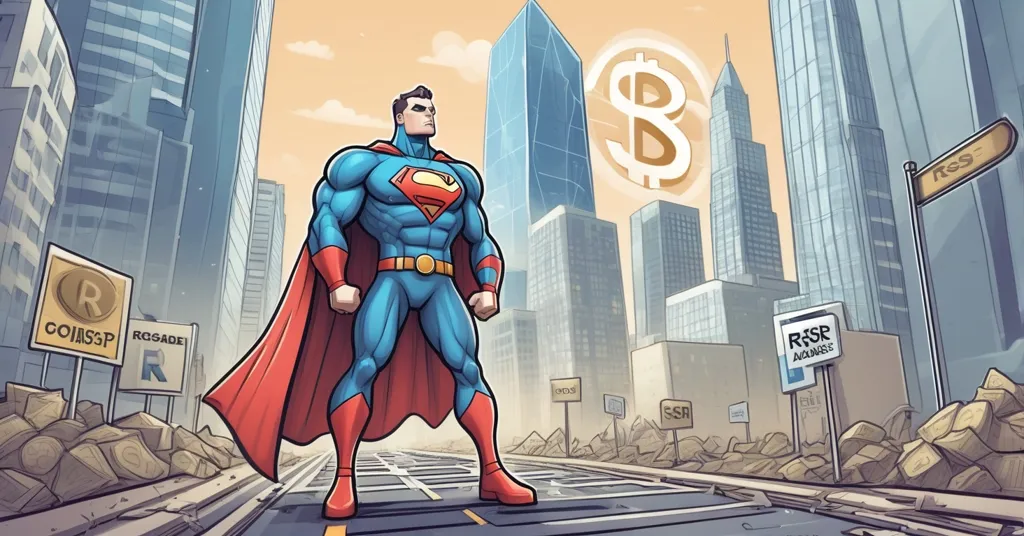Coinbase Adds RSR to Roadmap, Boosting Stablecoin Ecosystems

Coinbase Adds Reserve Rights (RSR) to Its Listing Roadmap: A Step Towards Stablecoin Ecosystems
Did you know that stablecoins, designed to minimize price volatility, are becoming the unsung heroes of the crypto world? Coinbase, a leading cryptocurrency exchange, has just announced the addition of Reserve Rights (RSR) to its listing roadmap, signaling a focus on these stablecoin ecosystems.
- Coinbase adds RSR to its listing roadmap
- RSR is integral to the Reserve Protocol and its stablecoin, RSV
- Expected to boost RSR’s visibility and liquidity
- Reflects Coinbase’s strategy to expand offerings
- Raises questions about regulatory and integration challenges
What is Reserve Rights (RSR)?
Reserve Rights (RSR) isn’t just another token; it’s the superhero sidekick to RSV’s stablecoin saga. Think of RSR as the guardian angel of the Reserve Protocol, a system designed to keep the Reserve stablecoin (RSV) as steady as a rock. A stablecoin, for those new to the term, is a type of cryptocurrency designed to minimize the volatility of its price, often pegged to a stable asset like the US dollar. The Reserve Protocol uses RSR to manage the collateral backing RSV, ensuring its value remains stable. Imagine RSR as the central bank of this digital world, working tirelessly to maintain currency stability.
Coinbase’s Strategy
Coinbase’s decision to include RSR on its roadmap is a clear signal of its intent to cater to the growing appetite for diverse cryptocurrencies, especially those tied to stablecoin ecosystems. As the crypto world continues to evolve, exchanges like Coinbase are keen to stay ahead of the curve, offering their users a broader range of assets to trade and invest in. This move isn’t just about adding another coin to the pile; it’s a nod to the burgeoning world of stablecoins and the innovative protocols behind them.
But let’s not forget the Bitcoin maximalists out there, who might raise an eyebrow at the inclusion of altcoins like RSR. While Bitcoin remains the king of cryptocurrencies, altcoins and other blockchains serve unique roles in this financial revolution. RSR, for instance, fills a niche that Bitcoin, with its focus on being a store of value, does not aim to serve. It’s about embracing the diversity of the crypto ecosystem and recognizing that different tokens can coexist and serve different purposes.
Regulatory Challenges
However, the inclusion of RSR on Coinbase’s platform brings with it a wave of regulatory scrutiny. As one crypto expert put it, “The inclusion of RSR on Coinbase could significantly boost its adoption and liquidity, but it also brings new regulatory scrutiny.” This is a reminder that while the crypto space is ripe with opportunity, it’s also fraught with challenges, particularly when it comes to navigating the complex web of regulations.
Exchanges like Coinbase conduct due diligence and assess regulatory compliance before listing tokens, which could pose challenges for RSR. The criteria for listing include a strong use case, credible team, community engagement, security, regulatory compliance, and liquidity. It’s a delicate dance with regulatory bodies, ensuring compliance while pushing the boundaries of what’s possible in the crypto space.
Impact on Adoption and Liquidity
The addition of RSR to Coinbase’s roadmap is expected to enhance its visibility and liquidity. With a 91.6% bullish sentiment among RSR users, as reported by BeInCrypto, the potential for higher adoption is clear. The example of EDGE token’s triple-digit rally post-Coinbase listing illustrates the potential market impact of such listings. RSR’s addition could be a game-changer for the stablecoin landscape, providing more users with access to the token through the exchange.
The Future of Stablecoins
The Reserve Protocol itself is a fascinating beast. It’s all about creating a stablecoin (RSV) that’s as reliable as your morning coffee, using RSR to manage the collateral that backs it. This isn’t just about creating another digital currency; it’s about building a more stable financial ecosystem, one that could potentially challenge the dominance of traditional fiat currencies.
Moreover, the Reserve Protocol aligns with the values of decentralization and freedom, promoting financial independence from centralized systems. It’s a step towards effective accelerationism, accelerating the adoption of decentralized technologies and disrupting the status quo. As we watch RSR take its place on Coinbase’s roadmap, we’re reminded of the delicate balance between innovation and regulation in the crypto world. It’s a space where the potential for disruption is matched only by the challenges of integration.
Key Questions and Takeaways
What is the purpose of the Reserve Protocol and how does RSR fit into it?
The Reserve Protocol aims to create a stablecoin called Reserve (RSV) that maintains a stable value through collateralization. RSR is used within this protocol to manage the collateral backing RSV, ensuring its stability.
How might the addition of RSR to Coinbase’s listing roadmap impact the token’s adoption and liquidity?
The inclusion of RSR on Coinbase’s roadmap is expected to increase its visibility and liquidity, potentially boosting its adoption as more users gain access to the token through the exchange.
What regulatory challenges might Coinbase face by listing RSR?
Listing RSR could bring new regulatory scrutiny to Coinbase, as regulators are increasingly focused on the tokens listed on major exchanges and the potential risks they pose to investors.
Why is Coinbase expanding its cryptocurrency offerings to include tokens like RSR?
Coinbase is expanding its offerings to meet the growing demand for diverse cryptocurrencies, particularly those related to stablecoin ecosystems, as part of its strategy to remain competitive in the market.
As we cheer for the potential of RSR and the Reserve Protocol, we must also acknowledge the hurdles. Integrating new tokens into established platforms like Coinbase is no small feat. But if there’s one thing we know, it’s that the journey towards a decentralized financial future is one worth watching, with all its twists and turns.



